Introduction :
Mastering the art of drawing a cozy bed can be a fun and rewarding experience. Whether you are a beginner or an experienced artist, these 25 easy bed drawing ideas will help you improve your skills and create stunning artwork. From simple sketches to detailed illustrations, there are plenty of techniques to explore. With a little practice and patience, you can learn how to capture the warmth and comfort of a bed on paper. So grab your drawing supplies and get ready to create beautiful images that will make you want to jump right in and snuggle up!
1. Cute Cartoon Bed Drawing
The cute cartoon bed drawing features a cozy bed with fluffy pillows and a soft blanket. The design is playful and whimsical, perfect for a children’s room or a fun art piece. The cartoon style adds a touch of charm and innocence to the drawing, making it a delightful addition to any space. The vibrant colors and simple lines of the illustration bring a sense of warmth and comfort, making you want to jump right into the picture and snuggle up in that adorable bed.

source: iheartcraftythings.com
2. How to Draw a Bedroom with Color
To draw a bedroom with color, start by choosing a color scheme that reflects the mood you want to create in the space. Soft pastel tones can create a calm and relaxing atmosphere, while bold and vibrant colors can add energy and excitement. Use a variety of colors for different elements in the room, such as walls, furniture, bedding, and decor. Consider how natural light will affect the colors and choose shades that will complement each other well. Don’t be afraid to experiment with different color combinations until you find the perfect balance that suits your personal style and preference.

source: drawinghowtos.com
3. Bed Drawing Step by Step Guide
1. Start by drawing a rectangle to represent the mattress of the bed.
2. Next, sketch the headboard by drawing a taller rectangle at the top of the mattress.
3. Add details like pillows and blankets to make the bed look cozy and inviting.
4. Draw the bed frame by adding lines and details to the sides and bottom of the mattress.
5. Finish off by adding any additional touches like a bed skirt or decorative patterns to complete the drawing of the bed.
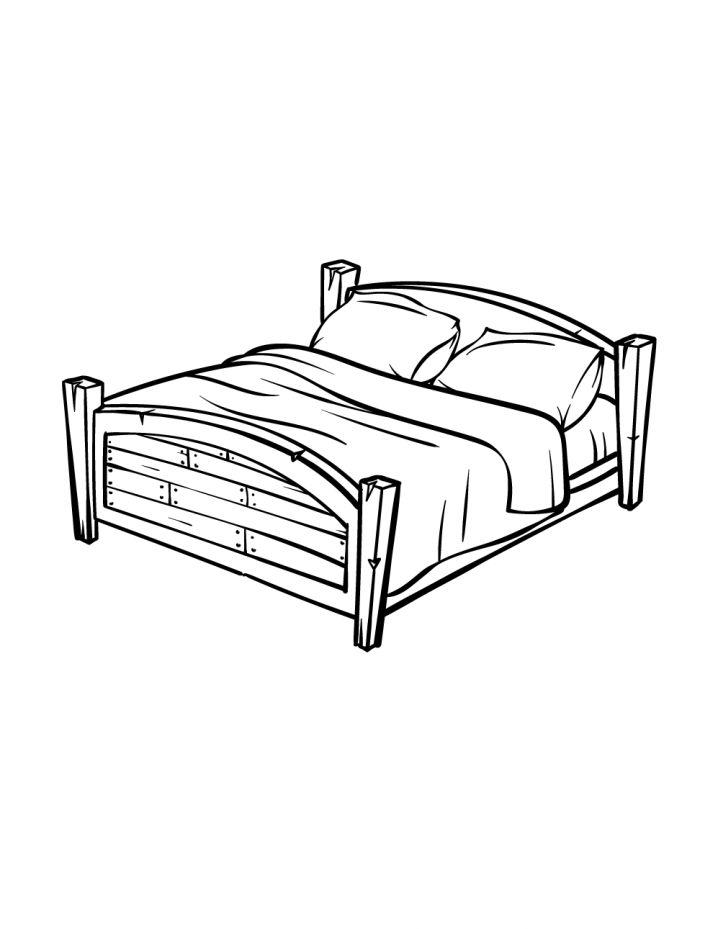
source: iheartcraftythings.com
4. Wonderful Bed Drawing for Beginners
Drawing a bed can seem daunting, but with the right techniques, even beginners can create a wonderful bed drawing. Start by sketching the basic shape of the bed frame, including the headboard and footboard. Then add details such as pillows, blankets, and decorative elements to bring the bed to life. Remember to use shading to create depth and dimension in your drawing. With practice and patience, you can create a beautiful bed drawing that showcases your artistic skills. Happy drawing!
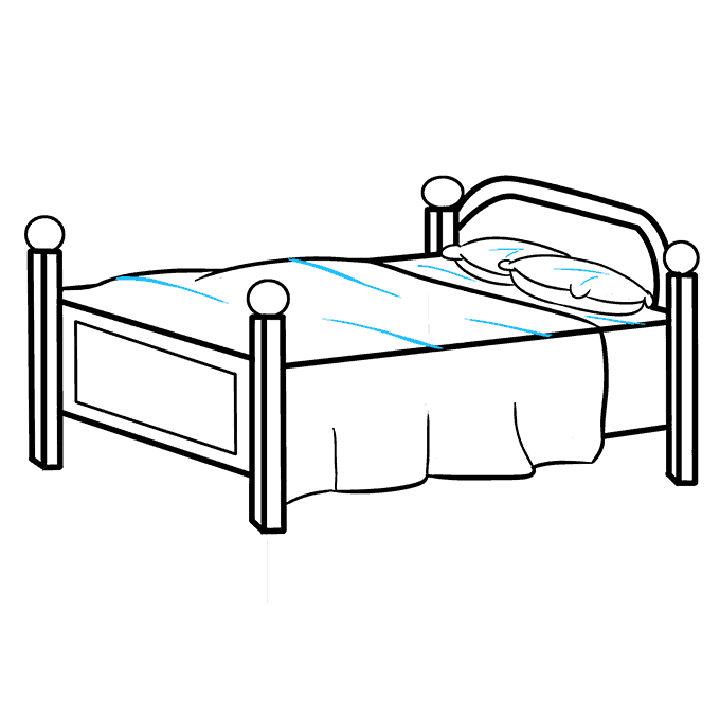
source: easydrawingguides.com
5. How Do You Draw a Bed
To draw a bed, start by sketching a rectangular shape for the mattress. Next, add four straight lines to represent the bed frame. Then, draw two parallel lines at the head of the bed to create the headboard. Add details like pillows and a blanket to make the bed look more realistic. Remember to use shading to give the bed depth and dimension. Finally, add any additional details like a bedside table or a lamp to complete the drawing. With practice and patience, you can create a detailed and lifelike bed drawing.
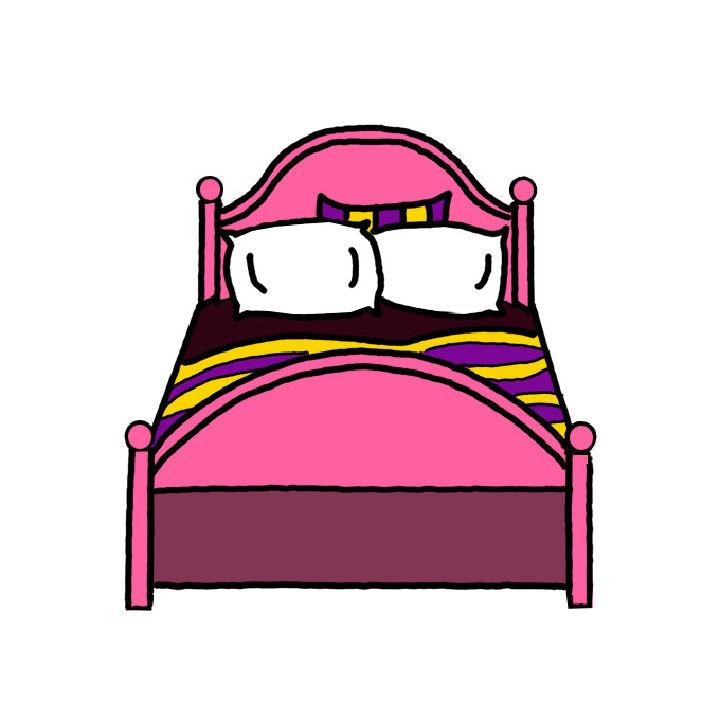
source: drawinghowtos.com
6. How to Draw a Dog Bed
To draw a dog bed, start by sketching a rectangular shape to represent the base of the bed. Next, draw four legs at each corner of the base to lift the bed off the ground. Then, add some details like a cushion or blanket on top of the base to make it cozy for the dog. You can also add some patterns or textures to the bed to make it more visually appealing. Lastly, don’t forget to add a cute little dog sleeping on the bed to complete the drawing.
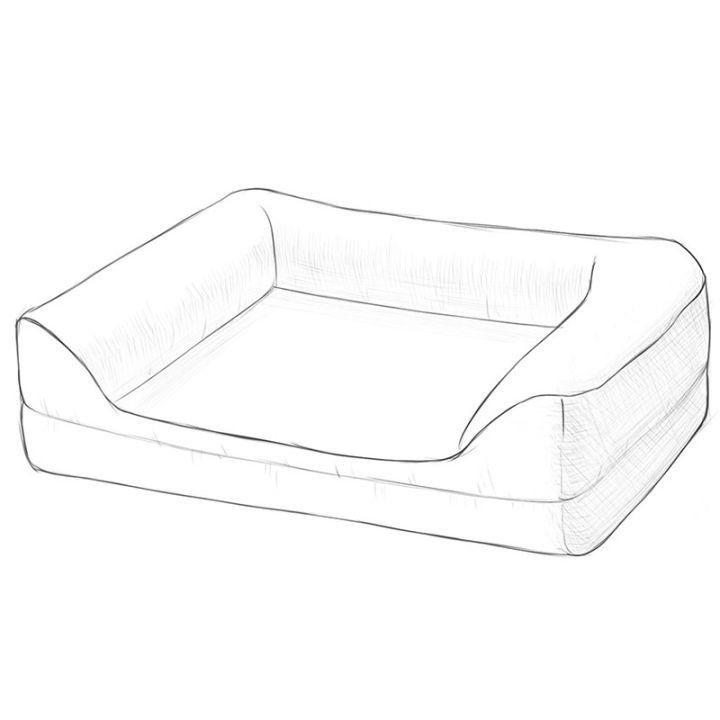
source: www.drawingforall.net
7. How to Draw a Four Poster Bed
To draw a four poster bed, start by sketching a rectangle for the base of the bed frame. Then, draw four vertical lines at each corner of the rectangle to create the posts of the bed. Connect the top of the posts with horizontal lines to form the top of the bed frame. Next, add details like ornate carvings or decorative designs to the posts and headboard to give the bed a more realistic look. Finally, add some fabric draping from the top of the bed frame to complete the four poster bed drawing.
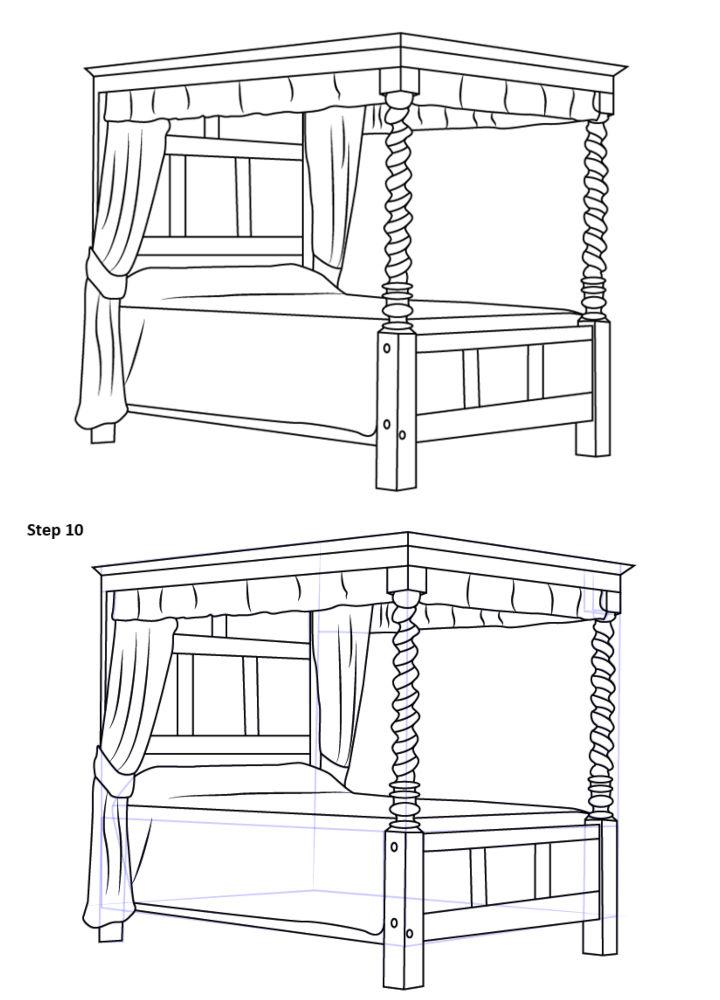
source: www.drawingtutorials101.com
8. Drawing Of A Bed
A simple drawing of a bed can evoke feelings of comfort, relaxation, and coziness. The rectangular shape of the bedframe, with its four legs and headboard, is instantly recognizable and often associated with a good night’s sleep. The soft, inviting mattress and carefully arranged pillows on top complete the picture of a perfect place to rest and recharge. Whether it’s a quick sketch or a detailed illustration, a drawing of a bed can bring a sense of tranquility to any room or piece of artwork.
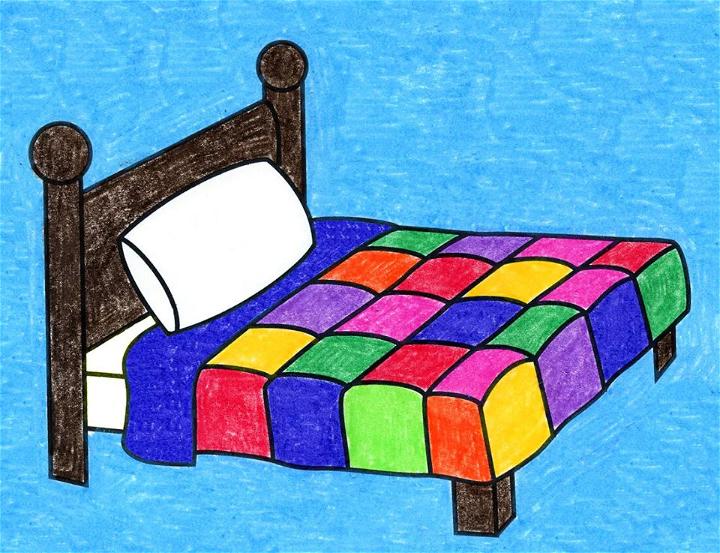
source: artprojectsforkids.org
9. Bed Drawing for Elementary School Students
Bed drawing can be a fun and creative activity for elementary school students. Encouraging children to draw a bed allows them to explore their imagination and express their creativity. They can experiment with different shapes, sizes, and colors to create their own unique bed designs. This activity also provides an opportunity for students to practice their fine motor skills and attention to detail. By drawing beds, children can learn about perspective, proportions, and spatial awareness. Overall, bed drawing can be a wonderful exercise for young students to unleash their artistic abilities and have fun while doing it.
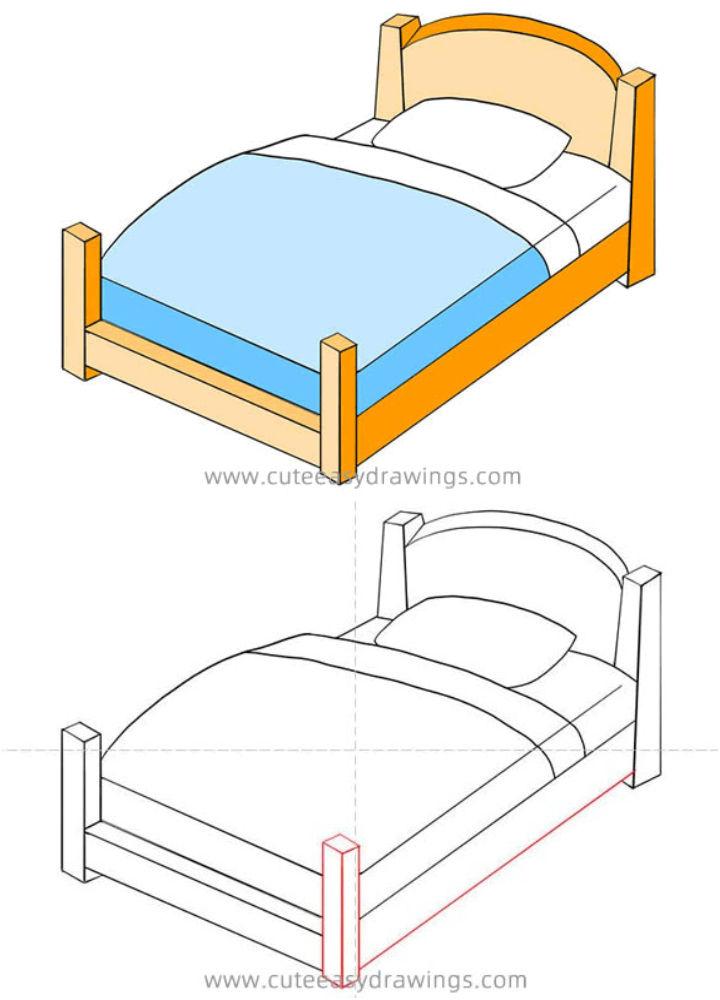
source: www.cuteeasydrawings.com
10. Simple Bed Drawing
A simple bed drawing can be a fun and easy way to practice your artistic skills. By focusing on the basic shapes and proportions of a bed, you can create a charming illustration that captures the essence of a cozy place to rest. With just a few lines and a little imagination, you can bring this everyday object to life on paper. Whether you’re a beginner or an experienced artist, creating a simple bed drawing can be a relaxing and rewarding creative exercise.
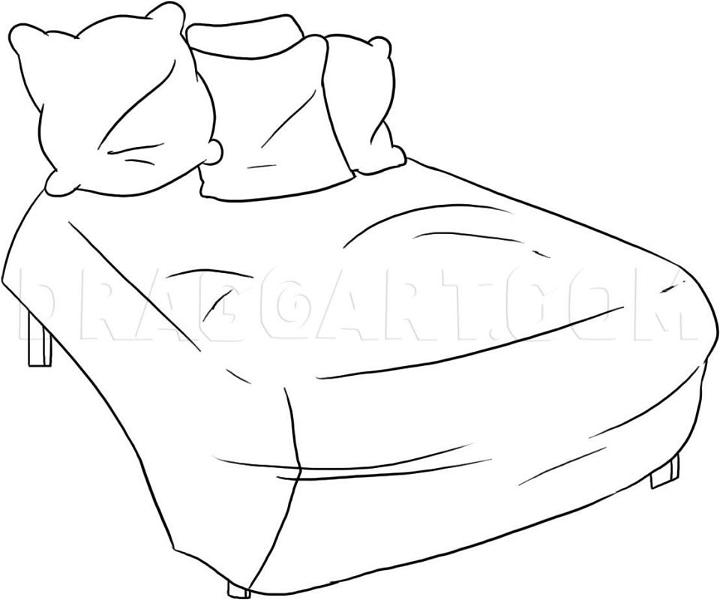
source: dragoart.com
11. How to Draw a Children’s Single Bed
To draw a children’s single bed, start by sketching a rectangular shape for the main part of the bed. Then, add two smaller rectangles on each side to represent the bed legs. Next, draw a headboard at one end of the bed by creating a taller rectangle with curved edges. You can add details like pillows and a blanket to make the bed look cozy and inviting. Finally, add some fun decorations like a teddy bear or a night light to complete the drawing.
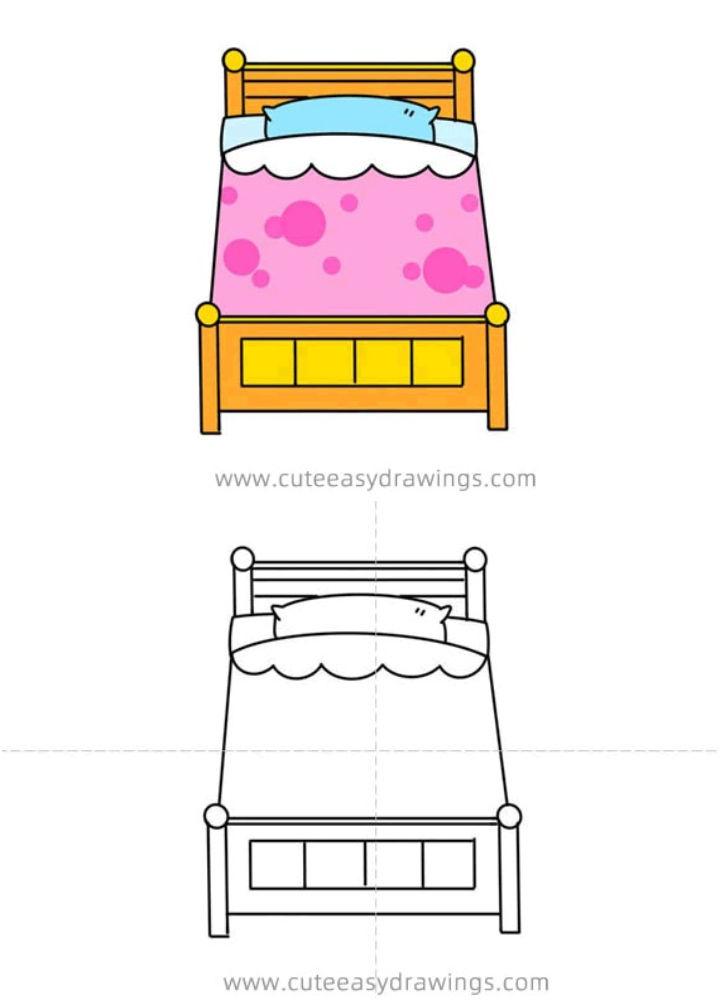
source: www.cuteeasydrawings.com
12. How to Draw Sofa Cum Bed
To draw a sofa cum bed, start by sketching the basic shape of a sofa with a backrest, seat cushions, and armrests. Next, add details such as buttons or stitching on the cushions and any decorative elements on the frame. To show that it can transform into a bed, draw a section where the backrest can be folded down to extend the sleeping area. Add pillows and a blanket to indicate that it’s in bed mode. Finally, add shading and texture to give your drawing depth and realism. With practice and attention to detail, you can create a beautiful illustration of a sofa cum bed.
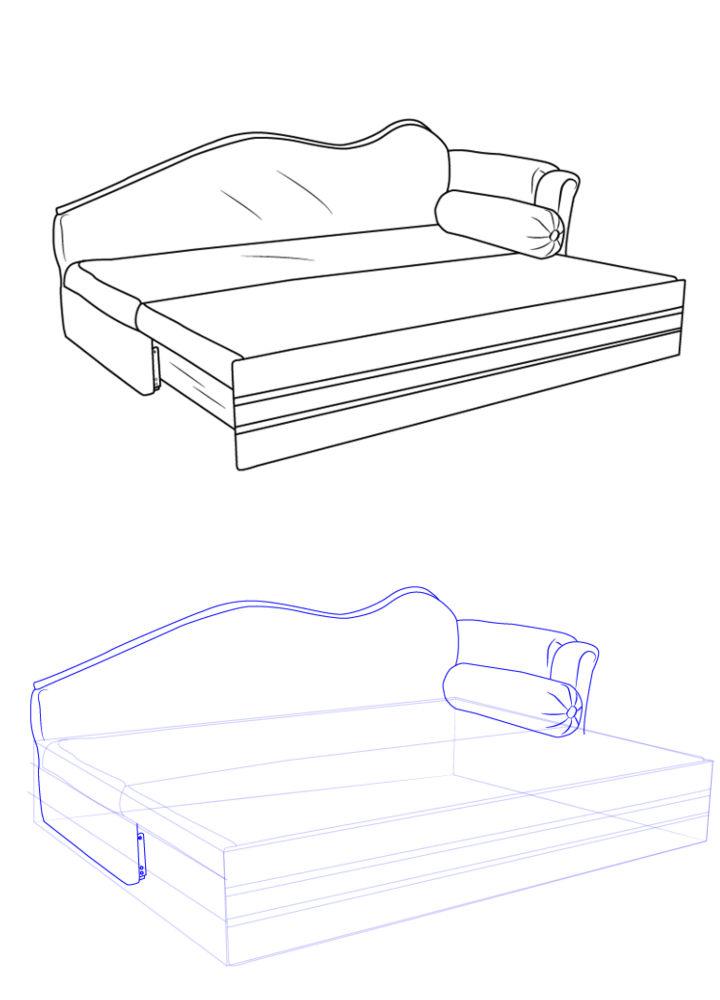
source: www.drawingtutorials101.com
13. Bunk Bed Drawing
Designing a bunk bed drawing requires attention to detail and creativity to ensure both functionality and aesthetics. The structure should be sturdy and safe, with features like railings and ladders for easy access to the top bunk. Additionally, incorporating storage solutions such as built-in drawers or shelves can maximize space in a room. Attention to proportions and measurements is crucial to ensure that the bunk bed fits comfortably in the designated space. Overall, a well-thought-out bunk bed drawing can serve as a focal point in a room while providing practical sleeping arrangements for multiple individuals.
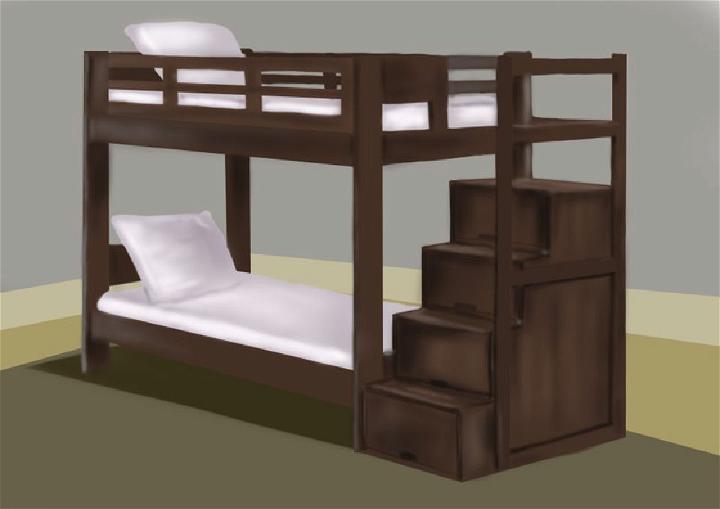
source: drawingtutorials101.com
14. How to Draw a Bed for Kids
When drawing a bed for kids, start by sketching a rectangular shape to represent the mattress. Then, draw two parallel lines on each side to create the bed frame. Add details like a headboard and footboard to make the bed look more realistic. Next, draw some pillows and a cozy blanket on top of the mattress. To finish off the drawing, add some decorative elements like stars or hearts to make the bed more fun and appealing to kids. Remember to use bright colors and have fun with the design!

source: howtodrawforkids.com
15. Easy Way to Draw a Bed with Pencil
To draw a bed with a pencil, start by sketching a simple rectangular shape to represent the mattress. Next, add two straight lines at the bottom of the mattress to create the bed frame. Then, draw two vertical lines at the head of the bed to indicate the headboard. You can add details like pillows and a blanket to make the bed look more realistic. Finally, shade in the bed frame and mattress to add depth and dimension. Remember to practice and have fun with your drawing!
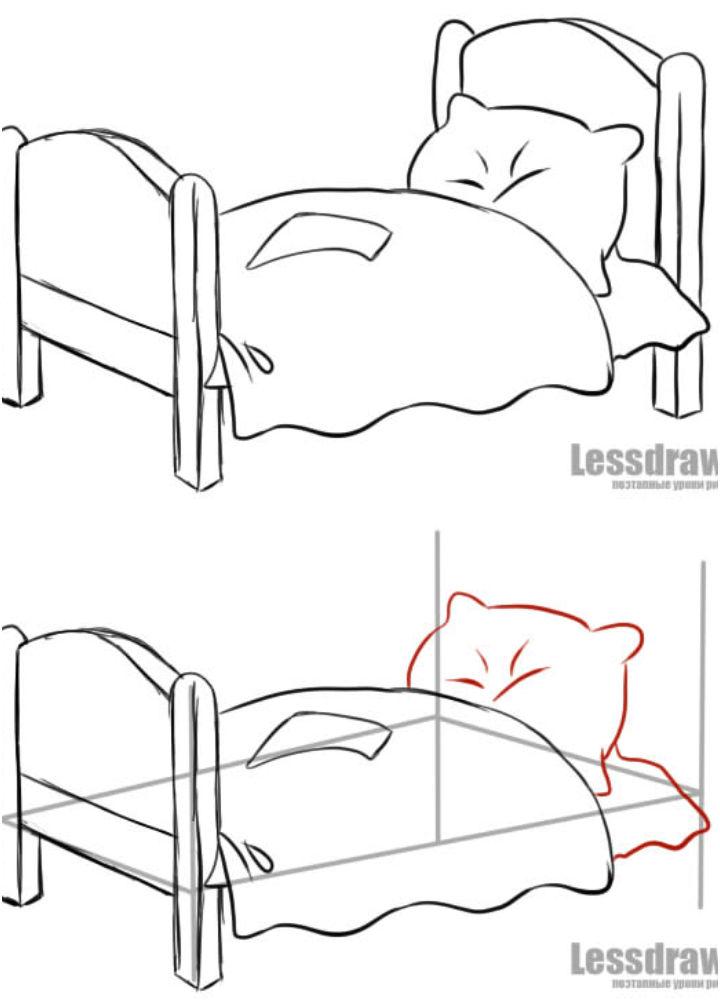
source: myris.jesima.com/article/515
16. How to Draw a Patient in a Hospital Bed
When drawing a patient in a hospital bed, start by sketching the basic shape of the bed and the person lying on it. Pay attention to proportions and angles to create a realistic depiction. Add details such as the bed rails, IV poles, and medical equipment to enhance the authenticity of the scene. Focus on capturing the facial expression of the patient to convey emotions and mood. Use shading and detailing to add depth and texture to the drawing, making it more lifelike. Practice drawing different perspectives and angles to improve your skills in illustrating hospital scenes.
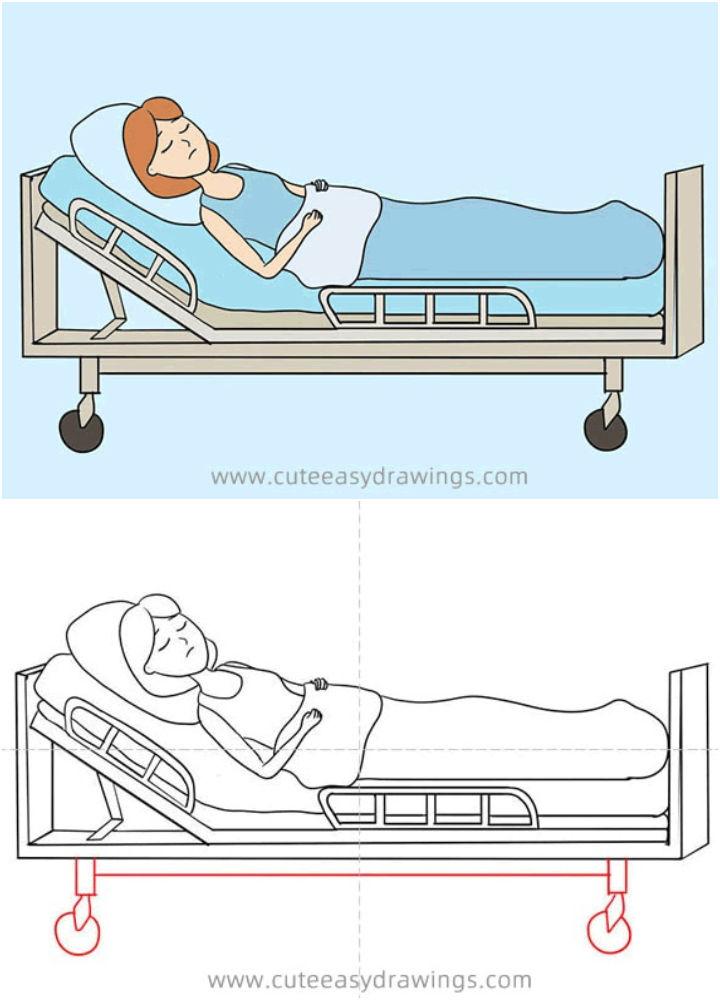
source: cuteeasydrawings.com
17. Draw a Bed Using Basic Shapes and Colors
To draw a bed using basic shapes and colors, start by sketching a rectangle for the mattress and two smaller rectangles on top for pillows. Add a larger rectangle beneath the mattress for the bed frame. Use basic shapes like circles for the knobs on the headboard and squares for the legs of the bed. For the colors, you can use shades of brown for the frame, white for the mattress, and various colors for the pillows. Don’t forget to add details like a patterned blanket or a textured headboard to make the bed look more realistic.
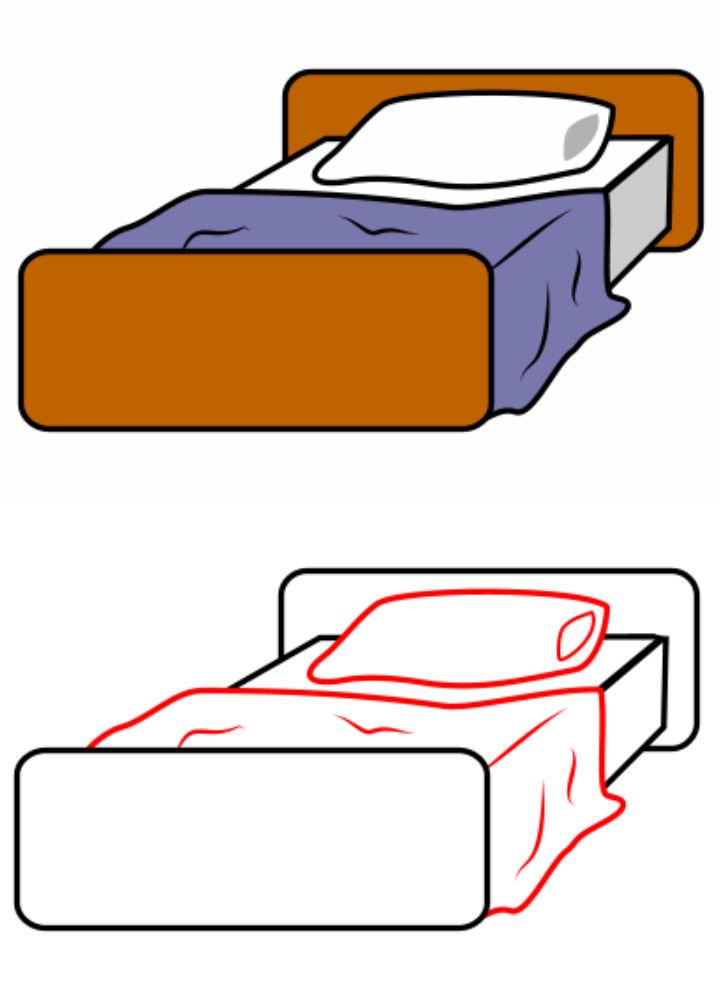
source: www.sitesell.com
18. Bed Drawing Side View
When drawing a bed from a side view, it is important to capture the various components that make up the structure. Start by sketching the basic shape of the bed frame, including the headboard, footboard, and side rails. Add details such as the mattress, pillows, and blankets to make the drawing more realistic. Pay attention to proportions and perspective to ensure that the bed looks accurate from this viewpoint. You can also add in small touches like bedside tables or lamps to enhance the overall composition.
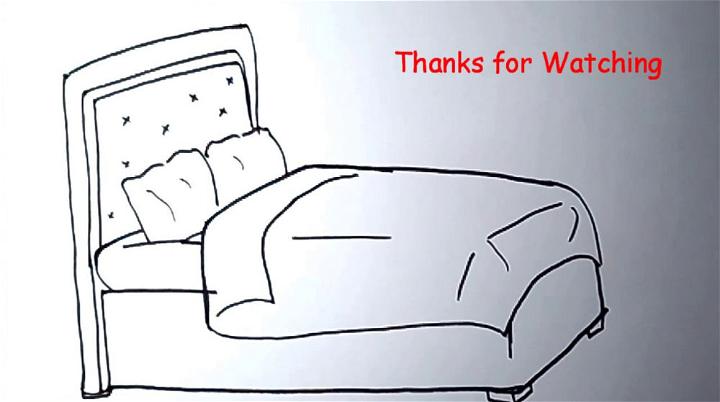
19. How to Draw a Bed Room in 3D
To draw a bedroom in 3D, start by sketching out the basic shape of the room using a ruler and pencil. Next, add in the furniture such as the bed, dresser, and nightstands. Make sure to use varying shapes and sizes to give the room depth. Then, add in details such as windows, doors, and decor items like rugs and lamps. Use shading and perspective techniques to make the room look realistic and three-dimensional. Finally, add in any finishing touches such as textures and patterns to enhance the overall look of the room. With practice and patience, you can create a visually stunning 3D drawing of a bedroom.
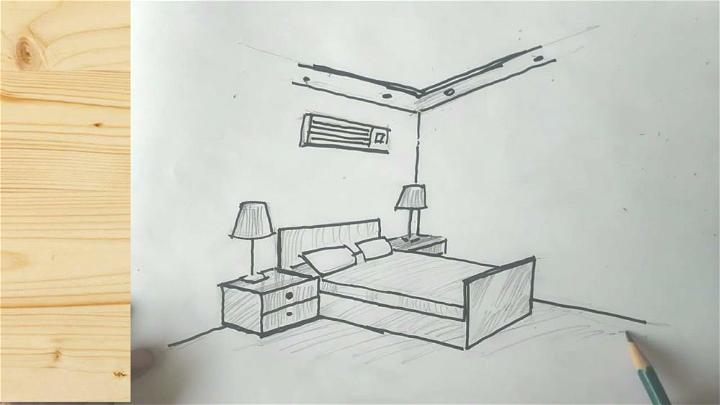
20. How to Draw a Sad Girl Sitting on Bed Alone
To draw a sad girl sitting on a bed alone, start by sketching the basic outline of the girl in a seated position on the bed. Pay attention to her body language, making sure to convey a sense of loneliness and sadness. Focus on drawing her facial expression, with downturned eyes and a slight frown to capture the emotion. Add details such as disheveled hair and slumped shoulders to further emphasize her feelings of sadness. Use shading to create depth and add shadows to enhance the mood of the drawing. Remember to take your time and practice to perfect the emotional portrayal of the sad girl sitting alone on the bed.
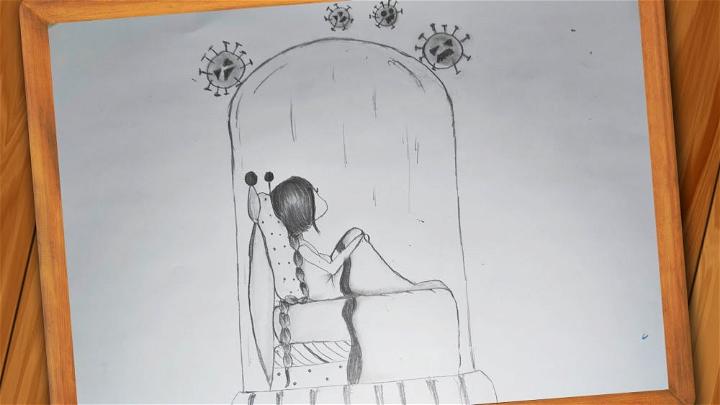
21. Bed Line Drawing
is a simple yet effective way to add a touch of elegance to any bedroom decor. By using clean, straight lines to outline the shape of a bed, this style of drawing can create a modern and sophisticated look. Whether it’s a hand-drawn sketch on a piece of paper or a digital illustration on a computer, a bed line drawing can be a unique and artistic addition to your home. The simplicity of the design allows it to blend seamlessly with any style of bedding or furniture, making it a versatile choice for any bedroom setting.
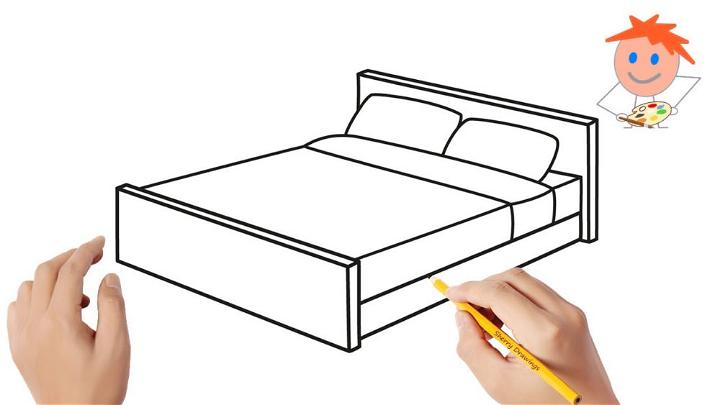
22. How to Draw a Bed Step by Step
To start drawing a bed, first, sketch out the basic shape of the mattress using a rectangle. Next, draw the headboard by adding a taller rectangle at the top of the mattress. Then, add the footboard by drawing another rectangle at the bottom of the mattress. After that, draw the bedposts by adding vertical lines at each corner of the bed. Connect the bedposts with horizontal lines to create the frame of the bed. Finally, add details like blankets, pillows, and a pattern on the headboard to complete the drawing of a bed.
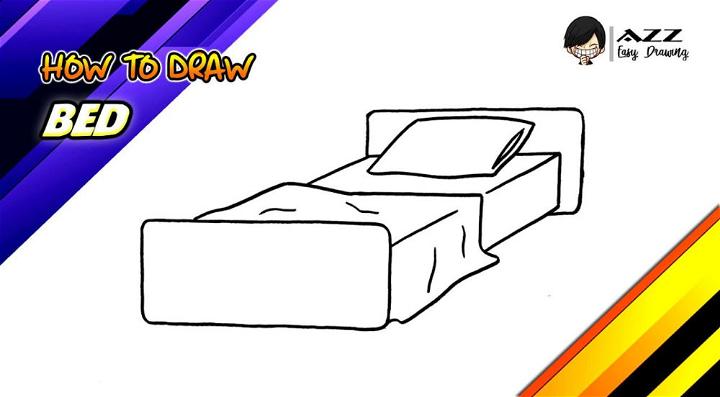
23. Easy Bed Drawing
Creating an easy bed drawing can be a fun and relaxing artistic exercise. Start by sketching a simple rectangular shape to represent the mattress, then add two parallel lines on the sides for the bed frame. Next, draw a headboard and footboard by adding slightly curved lines. To finish off the drawing, add some pillows and a blanket on top of the mattress. Feel free to get creative with the details, such as adding patterns or textures to the bedding. This simple bed drawing can be a great way to practice your artistic skills and imagination.

24. How to Draw a Bed for Children
When drawing a bed for children, start by creating a rectangular shape for the mattress. Add two straight lines on each side to represent the bed frame. Then, draw a headboard at the top of the bed by sketching a slightly larger rectangle. Next, add some pillows on top of the mattress by drawing small circular shapes. You can also add a blanket by drawing a wavy line across the top of the mattress. Finally, add some details like patterns or characters to make the bed more fun and inviting for children. Remember to use bright colors to make the drawing more appealing to kids.
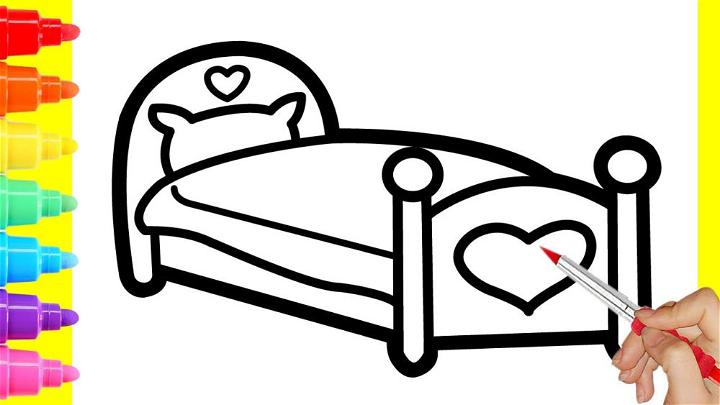
25. Bedroom Drawing for Beginners
When starting to draw a bedroom as a beginner, it’s important to break down the elements of the room into simple shapes and lines. Begin by sketching the outline of the room, including the walls, windows, and doors. Next, add basic shapes to represent furniture such as the bed, dresser, and desk. Remember to consider perspective and scale to make your drawing look realistic. Add details like curtains, rugs, and wall decorations to bring the room to life. Practice shading and adding texture to give your drawing depth and dimension. With patience and practice, you can create a beautifully detailed bedroom drawing as a beginner.

source: youtube.com
FAQ:
1. How can I make my bed drawing look more realistic?
A: Pay attention to details such as folds in the bedding, shadows, and textures to make your bed drawing more realistic.
2. What materials do I need to draw a bed?
A: You can use a pencil, paper, eraser, and shading tools like markers or colored pencils to draw a bed.
3. Can you provide tips for drawing a bed from different angles?
A: To draw a bed from different angles, practice perspective drawing and pay attention to the proportions of the bed from each viewpoint.
4. How do I add pillows and cushions to my bed drawing?
A: To add pillows and cushions, draw basic shapes for the pillows and then add details like creases and textures to make them look realistic.
5. What are some common mistakes to avoid when drawing a bed?
A: Common mistakes include neglecting to add shadows, not paying attention to proportions, and making the bed look flat without any depth.
Conclusion:
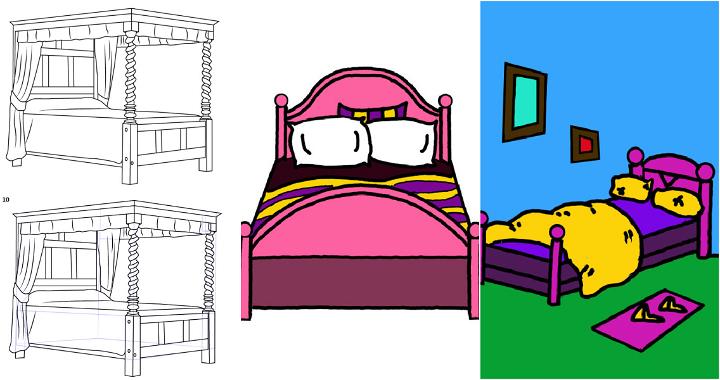
It is important to carefully consider the information presented and critically evaluate its credibility before drawing any conclusions. By being mindful of bias, misinformation, and the source of the information, we can make more informed decisions and ensure that we are not being misled. In today’s digital age, where information is abundant and easily accessible, it is crucial to practice discernment and verify sources to avoid falling victim to false information or manipulation.








